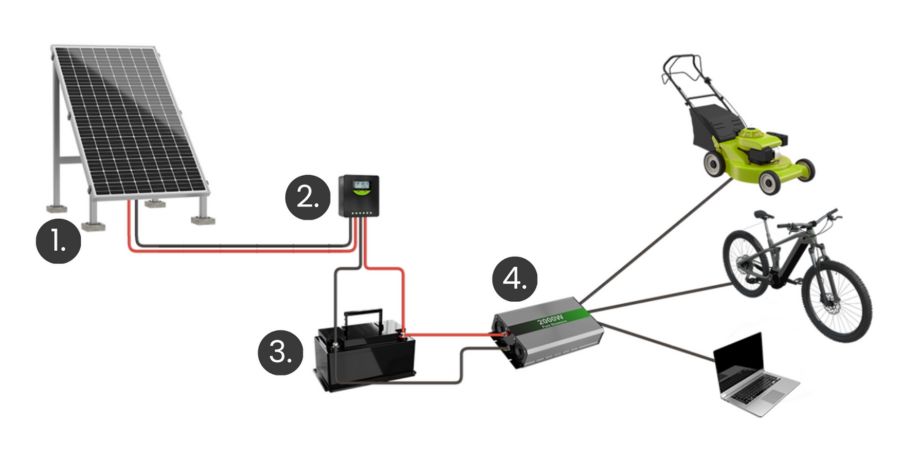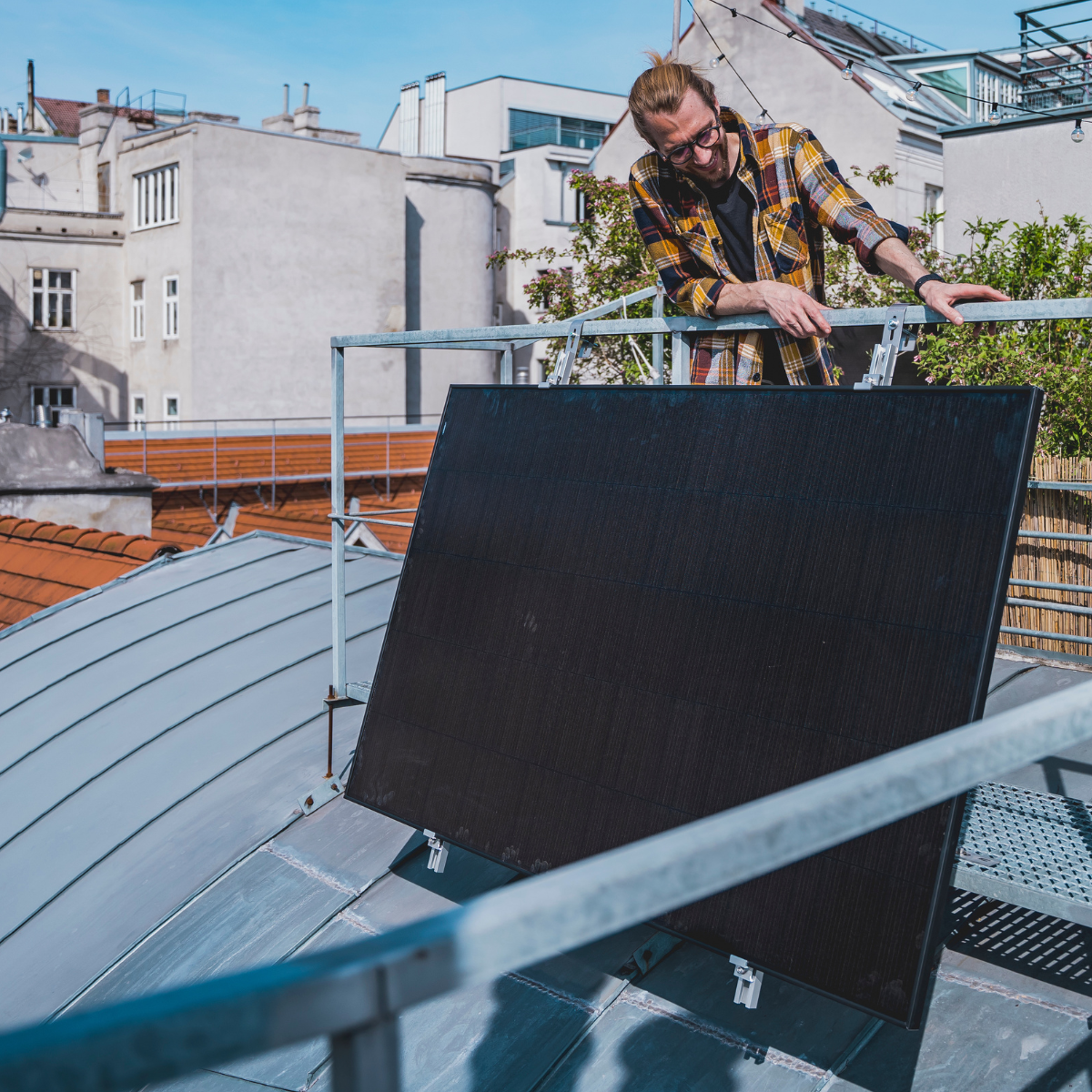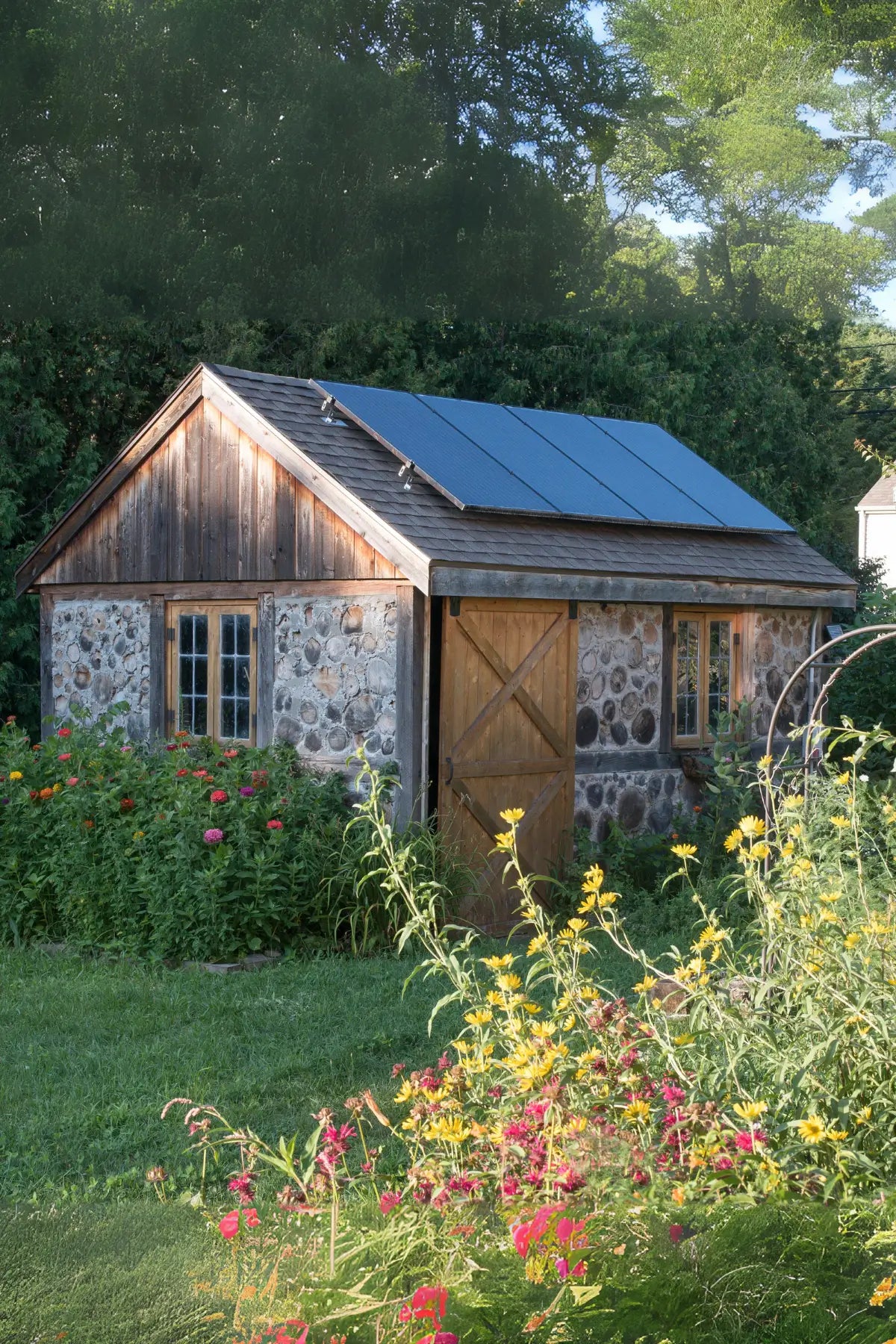Solar systems can be installed not only on house roofs or balconies but wherever you need electricity. This way you can also supply your garden house, which has no power connection, with electricity or your Tiny House with a solar system. These are called off-grid systems, which can be installed without a shore power connection. The off-grid system consists of three Up to four components that need to be adapted depending on the location and power requirements. Let's take a look at what these components are and which ones you absolutely shouldn't do without.
The most important element is the Solar module [1] These modules consist of photovoltaic cells that convert sunlight into direct current. The amount of energy generated depends directly on the quality and capacity of the module, as well as the amount of sunlight reaching the module. Therefore, solar power cannot be generated without the solar module.
An often underestimated but crucial component in an island system is the Charge controller [2] . This device monitors the battery's charge level and regulates the charging current from the solar module to the battery. Why is the charge controller so important? Without it, there is a risk of overcharging, which can not only damage the battery but also pose safety risks. An overcharged battery can lose power, become prone to failure, and in the worst case, even be damaged. Furthermore, the charge controller minimizes the risk of short circuits and overheating, increasing the safety of the entire system.
The A battery [3] acts as an energy storage device and provides power when the sun isn't shining. High-quality batteries are crucial for a reliable energy supply. An off-grid system also works without a battery, but then the power can't be stored and can only be used directly. For example, you can run the pond pump in the summer when the sun is shining during the day. However, if you want to illuminate your garden in the evening or use your gardening tools even on cloudy days, you need a storage device for the solar power.
Another component of an island system is the Voltage converter [4] , also known as an inverter. This converts the direct current stored in the battery into the alternating current needed to operate electrical devices. This allows the stored energy to be used for various applications. For example, you can directly connect a string of lights or a garden tool to it.

These four components – solar modules, charge controller, battery, and voltage converter – form the heart of an off-grid solar system. Each component has a specific function, and their interaction is crucial for the efficiency and longevity of the system. The charge controller, in particular, plays a key role by protecting the battery and thus ensuring the reliability and safety of the entire off-grid system. Therefore, a charge controller should not be omitted if you are aiming for a powerful and sustainable solar solution. The size of the system depends on the devices that are to be connected to the system. The more devices that consume a lot of power that are to be connected, the larger the solar modules and battery must be. This ensures that there is always enough power, even when the sun isn't shining.
How to determine your consumption
First, determine your expected daily consumption. You can find this by counting all the devices you use during the day and the duration of use (hours per day). Add up the wattage ratings of each device and multiply the total by the expected operating hours:
Consumption (W+W+W+W...) x duration (h) = total (W/h)
Add 10-30% to this total as a power reserve (hours with little sunshine, general system loss). Based on this result, the right system can be selected for your needs.
The required Watt Peak (Wp) of a solar module can be converted into watt hours (Wh) as follows:
Wp x 4 = Wh/d or Wh/d : 4 = Wp
The calculation of the Battery capacity You calculate as follows:
Daily energy demand (Wh) x self-sufficient days x depth of discharge factor + 30% of the power demand as reserve
This requires some experience, and of course, our experts are available to provide you with precise calculations, valuable tips, and advice for individual advice and a quote.









